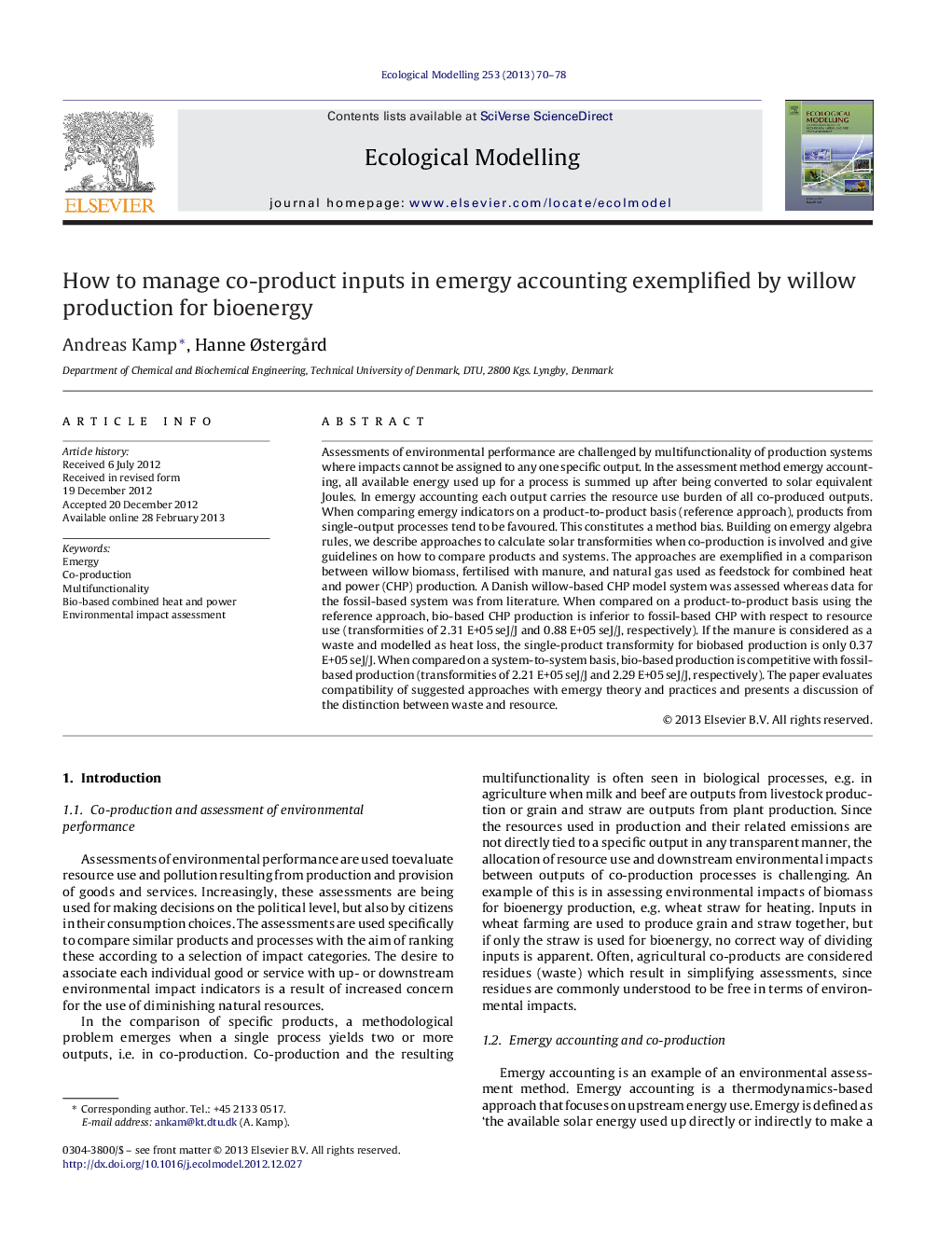| Article ID | Journal | Published Year | Pages | File Type |
|---|---|---|---|---|
| 4376222 | Ecological Modelling | 2013 | 9 Pages |
Assessments of environmental performance are challenged by multifunctionality of production systems where impacts cannot be assigned to any one specific output. In the assessment method emergy accounting, all available energy used up for a process is summed up after being converted to solar equivalent Joules. In emergy accounting each output carries the resource use burden of all co-produced outputs. When comparing emergy indicators on a product-to-product basis (reference approach), products from single-output processes tend to be favoured. This constitutes a method bias. Building on emergy algebra rules, we describe approaches to calculate solar transformities when co-production is involved and give guidelines on how to compare products and systems. The approaches are exemplified in a comparison between willow biomass, fertilised with manure, and natural gas used as feedstock for combined heat and power (CHP) production. A Danish willow-based CHP model system was assessed whereas data for the fossil-based system was from literature. When compared on a product-to-product basis using the reference approach, bio-based CHP production is inferior to fossil-based CHP with respect to resource use (transformities of 2.31 E+05 seJ/J and 0.88 E+05 seJ/J, respectively). If the manure is considered as a waste and modelled as heat loss, the single-product transformity for biobased production is only 0.37 E+05 seJ/J. When compared on a system-to-system basis, bio-based production is competitive with fossil-based production (transformities of 2.21 E+05 seJ/J and 2.29 E+05 seJ/J, respectively). The paper evaluates compatibility of suggested approaches with emergy theory and practices and presents a discussion of the distinction between waste and resource.
► We exemplify and discuss approaches to managing co-production in emergy accounting. ► Emergy indices for bio-based and fossil-based CHP production are compared. ► Solar transformities for willow farming and CHP production are provided. ► We emphasise distinction between product-to-product and system-to-system comparison. ► Waste used as a resource should not be modelled as having no environmental impact.
